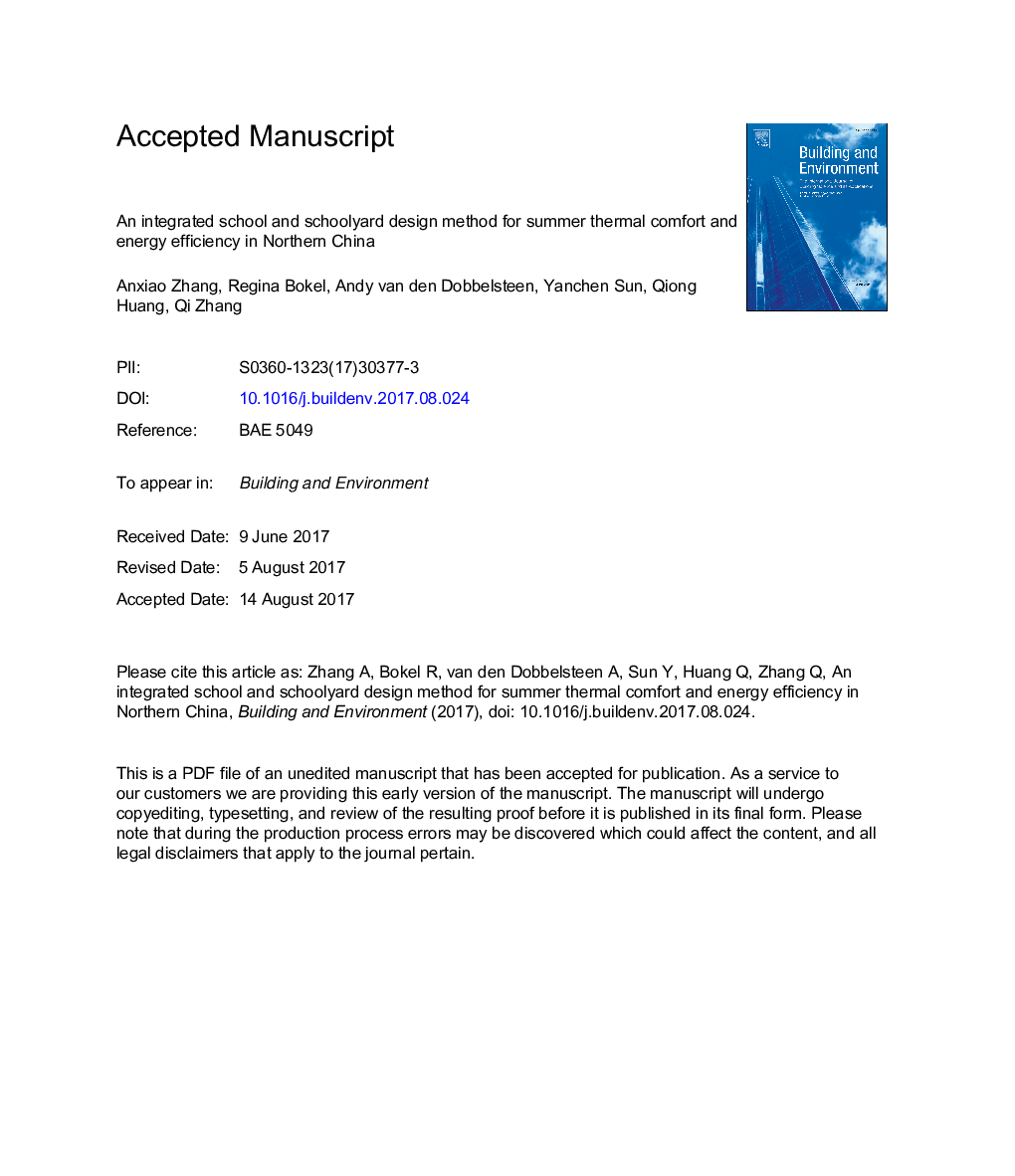| Article ID | Journal | Published Year | Pages | File Type |
|---|---|---|---|---|
| 4911429 | Building and Environment | 2017 | 31 Pages |
Abstract
A good school design consists of a thermally comfortable school and schoolyard as well as a low energy consumption of the school building. The main contribution of this study is that it develops an integrated design approach to systematically evaluate and optimize school design parameters at different design stages for summer outdoor thermal comfort and building cooling demand. A typical school in northern China was selected to illustrate the simulation-based design framework. The three-dimensional microclimate model ENVI-met was used to calculate outdoor temperatures and the Physiological Equivalent Temperature (PET) index as a measure of the outdoor thermal comfort condition. The ENVI-met results were then used as input for the thermal boundary conditions in the energy simulation software DesignBuilder. DesignBuilder, in turn, was applied to calculate the building cooling demand while taking into account the local outdoor thermal conditions. The integrated design approach proves to be effective for mitigating school heat stress and energy saving. By taking the school case as a reference, the integrated design method resulted in a high-performance design that reduced the outdoor discomfort time by 25% and the building cooling demand by 5%. Planting trees was found to be the most effective considering both the outdoor thermal comfort and building cooling demand. Other implications for planning and designing schools in terms of the school case are also presented in order to help architects in selecting strategies that enhance the thermal performance characteristics of both the school building and the schoolyard.
Related Topics
Physical Sciences and Engineering
Energy
Renewable Energy, Sustainability and the Environment
Authors
Anxiao Zhang, Regina Bokel, Andy van den Dobbelsteen, Yanchen Sun, Qiong Huang, Qi Zhang,
